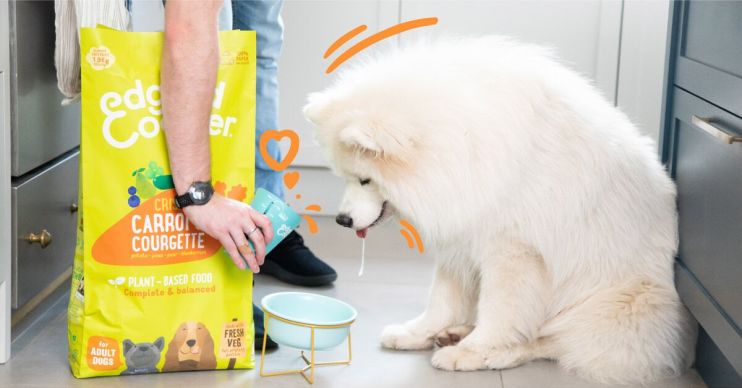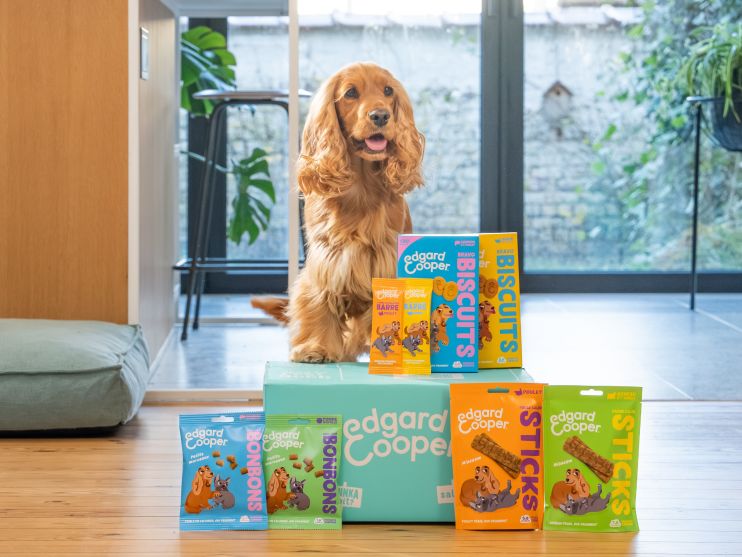How to feed a ‘fussy’ cat


Do you love your mysterious, somewhat stubborn, but oh so unique cat? You’ve probably noticed they can be a little picky about what’s on their plate. Cats have a reputation of being fussy and, while this is a teeny bit true, it’s often more nuanced than that. Cats are connoisseurs of many things - beds, laps, toys, but most of all - food.
Food is a cat’s main motivation - it’s at the top of their list of priorities. They prefer to eat in a safe environment, in line with their natural eating habits. Don’t forget: our domestic cats have all the same needs, instincts, preferences and expectations as their wild ancestors. With this in mind, a few small adjustments can make their ‘pickiness’ disappear. Here are a few tips and tricks to help your cat get all the nutrition and enjoyment they deserve.
Make it safe
First up, if your cat is being picky about their food, chances are their hesitation is more about how the meal is served rather than the actual food. That’s why our first - and most important - tip is to make sure your cat's environment, particularly its eating area, is always predictable, recognisable and safe.

Enough to go round?
Do you have enough eating places in your home for the number of cats you have? We generally recommend a rule of ‘n + 1’ eating locations (which also applies to drinking bowls and litter trays). So if you have three cats at home, it’s a good idea to provide 3+1 = 4 eating locations. If you have one cat, two eating locations would be ideal. Try to stick to the same locations every time. This way, your cat or cats can choose somewhere they feel safe when they’re eating or drinking. It’s all about giving them control. Oh, and just to avoid any confusion: three eating bowls in the same location is considered one location. For a cat, the location is important, not the number of bowls.
Keep it natural
In the wild, cats would never eat and drink from the same location. But in our homes, we often put their food and water bowls next to each other. Unlike humans, cats don’t drink at the same time as eating - they prefer to do this at other times. Cats also instinctively feel their water could be polluted by their food, which means they’re less attracted to it. That’s why we recommend putting their food and water bowls in different locations. Cats are already difficult drinkers, so we need to give them all the help we can!
Little and often
If you’ve ever watched a dog eat you’ll have noticed how different their habits are to a cat’s. Unlike their canine cousins, cats like to eat little and often - sometimes up to 10 or 20 times a day. That’s because, in nature, they’ll often catch 8 to 10 small prey a day. It’s important your cat can decide when and where they want to eat. We recommend feeding as much or as often as necessary or desired, as long as the following conditions are met:
you follow the n+1 eating location rule described above
there’s enough entertainment for your cat - such as a slow feeder bowl (cats like to work for their food)
they have a healthy, balanced diet
they get enough exercise through daily play
If all these conditions are met, a cat will rarely overeat. The only exception to this is if your vet recommends you restrict a cat’s diet to only two meals a day. In some cases, restricting a cat’s access to food will have the opposite effect to helping them lose weight; they’ll become fixated on food and end up eating too much.
Wet food vs. kibble
We always recommend feeding cats a bit of wet food every day. Not only do they love it, it helps them get enough moisture in their diets. However, leaving wet food out for too long dries it out, which is why kibbles are a good backup option. Cats are super sensitive to the freshness of what you offer them. Our purrfect plan is to provide kibbles all day long at different eating locations, and to pamper your cat with some wet food in the morning and/or evening.
The right temperature
In the wild, cats catch and eat small prey - like mice. That means their meals are usually slightly warm. If you feed your cat wet food, make sure it’s not cold. Ideally, you’d get into the habit of leaving their food out of the fridge for a while before giving it to your four-legged friend. If you really feel like treating them, you could warm it up a little bit first!
A whisker’s width
Are you sure your cat’s food and water bowls are big enough? When those whiskers touch something - like the edge of a bowl - it triggers lots of sensations. This can be a bit overwhelming when your cat is trying to eat or drink. So, instead of a deep or narrow bowl, a shallow dish is often a better option for a cat.

Be on the lookout
If your cat is still not eating well even though you’ve taken all of the above into account, it’s really worth checking there isn’t a more specific problem. Stress, dental problems, gastrointestinal upset or, for example, kidney disease could all be contributing factors. If you notice anything suspicious - particularly if it’s a change in behaviour - never hesitate to contact your vet. That’s it on our feeding tips, but there’s one important final question to answer: why does your cat keep choosing cheap, unhealthy food over a more premium, healthier brand?
The answer is simple. If it’s all you were used to, and you didn’t have to think about your health, would you choose between a hamburger with fries or a healthy diet with all natural ingredients? It’s the same for cats. We know we have to look for healthy options to stay happy, but cats don’t. In reality, your cat will be eternally grateful for a well-balanced diet with high quality proteins, natural fats and healthy goodies such as berries and herbs. That's exactly what makes Edgard & Cooper's food so healthy. We use lots of fresh meat and fresh fish together with nutritious offal. We never add anything unnatural, like chemical preservatives or extra sugars. Once your cat has got used to these new flavours, they’ll never look back.

There are lots of reasons why your cat might refuse to eat and it's your job to find out what’s going on. If you become frustrated, remember why you’re doing this: you want your cat to live a long and happy life by your side, and helping them enjoy a healthy, balanced diet is the best way to do just that!
About Edgard & Cooper

Joyful pet food
Eating is one of life’s simple joys, so why overcomplicate things? Unlike most other pet foods, we treat nature’s ingredients with respect and make food that’s naturally healthy and full of flavour.

Play nice with nature
We’re on a mission to become the world’s most sustainable pet food. We love nature, so we pledge to make real, lasting change through our targets of zero carbon, fully sustainable packaging and ethically sourced ingredients.

Friends stick together
We donate 1% of our sales to the Edgard & Cooper Foundation, which works with charities that improve the lives of cats and dogs today, while protecting them tomorrow.







